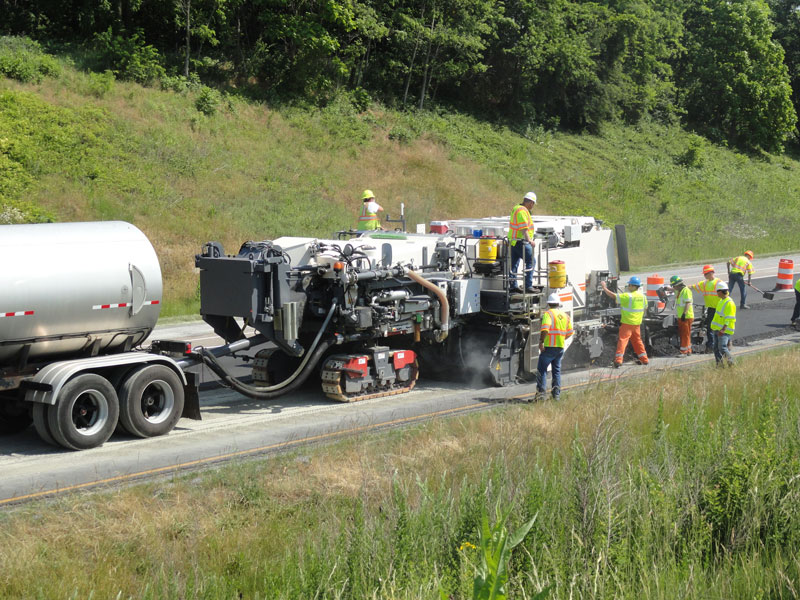The United States has more than two million miles of paved roads. Maintenance is a continual issue for local and state transportation agencies, but new pavements being developed are more sustainable, less costly, and yield other benefits such as capturing stormwater runoff.
There are several innovative pavement types that are gaining traction, including:
- Porous pavements: Porous pavements allow stormwater to percolate through the pavement and enter the soil below. Porous pavements work by allowing streets, parking lots, sidewalks, and other typically impervious covers to retain their natural infiltration capacity. In many instances porous pavements can be used in place of conventional asphalt or concrete in an ultra-urban environment. They are generally not suited for areas with high traffic volumes or loads.
- Rubberized asphalt: Waste materials like rubber tires are being incorporated into pavement products.
- Warm-mix asphalt: A recent survey found that almost a third of all asphalt produced during the 2013 construction season was produced using warm-mix asphalt technologies, compared to less than five percent in 2009.
Here are your game changers for this week!
Roads Built from Tires – Huntington Beach, California
California generates more than 40 million scrap tires every year. While nearly 75 percent of used tires are recycled, the rest still end up in landfills or illegal dumps. Ground tire rubber can be blended with asphalt to beneficially modify the properties of the asphalt in highway construction. Through the department’s Green Roads program, CalRecycle is reducing the amount of tires disposed in California’s landfills by putting waste tires to new use as rubberized asphalt concrete.
The City of Huntington Beach, California used grant funding from the program to improve six miles of arterial streets that were riddled with potholes, sunken areas, and crumbling pavement. The rubberized asphalt is expected to extend the lifespan of the pavement by an additional 10 to 20 years.
Recycling Pavement – Staunton, VA
On a four-mile section of Virginia’s I-81, a major north-south freight corridor, the pavement was 43 years old, well past its intended design life, and heavier volumes of truck traffic were taking a toll.
The Virginia Department of Transportation moved forward with a $10 million project that reused existing materials from the underlying road structure, while the driving surface received a new overlay of asphalt. The road construction method was not only environmentally sustainable — it reduced construction time by about two-thirds and saved Virginia millions, compared to the cost of conventional reconstruction. Traditional pavement construction would have required building another travel lane and would have taken one to two years to complete. By using in-place recycling, the project time was cut to seven months, resulting in significant cost savings, and reduced traffic disruptions.
Alleys that Drink Stormwater Runoff – Boston, Massachusetts
The city of Boston recently completed a new 508-square-foot “porous alley” that absorbs stormwater and filters it into the ground, rather than allowing it to make its way into the sewer system where it has to be treated.
Construction of the alley is part of a larger effort to boost the quality of water in the rivers surrounding Boston. Like many other localities, the Boston Water and Sewer Commission had to pay a fine for violating the Clean Water Act and take steps to minimize pollutants going into the waters. The porous surfaces also help keep ground water at optimal levels in neighborhoods such as the South End, where many buildings were constructed on top of wood pilings, which can rot if exposed to open air.
The nearby town of Arlington, Massachusetts, also used porous pavement for a project on Hurd Field to protect the water quality of adjacent Mill Brook.
Every day, new Infrastructure #GameChangers are changing how we build and use infrastructure. ASCE collected these game changing trends in energy, freight, transportation and water infrastructure into an interactive, web-based report at ASCEGameChangers.org. Find out more here, share these trends on social media using #GameChangers, or submit your own #GameChangers project!
